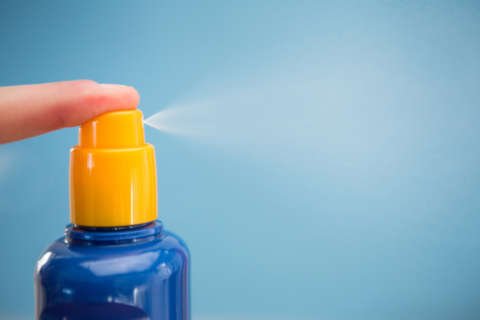WASHINGTON — Every year, 3.6 million people are diagnosed with skin cancer — and that number is on the rise, says Lauren Fraga, program director at the John Wayne Cancer Foundation.
This year alone, more than 160,000 Americans are expected to be diagnosed with melanoma, the deadliest form of skin cancer.
The good news is, most instances of skin cancer are preventable. Here are the best, most effective ways to keep safe this summer, while still enjoying the sun.
Sunscreen
Fraga emphasizes that sunscreen shouldn’t just be a “must” for the pool and the beach. It should be a product you use every day.
Finding a sunscreen that works
When it comes to finding a safe and effective sunscreen, Nneka Leiba, director of healthy living science at the Environmental Working Group, has some advice. First, she says, stick with a sunscreen that has an SPF between 15 and 50.
Going with a higher SPF could lure you into a false sense of security.
“The higher the SPF, the more protected a user feels, and so they feel like they can stay out in the sun for increased periods without reapplying their sunscreen appropriately, and that’s actually quite dangerous,” Leiba said.
Another thing to consider: The higher the SPF, the higher the concentration of active chemicals you’re rubbing into your skin.
“And so you’re exposing yourself to more chemicals that may have a negative health impact, and only for marginal increased benefits,” Leiba said.
EWG recently released a consumer guide to the healthiest, most effective sunscreens on the market, based on its set of standards.
More than 800 products were tested and rated based on the potential risks of their ingredients (Leiba notes the common ingredient oxybenzone, for example, has been linked to hormone disruption and allergies, and Vitamin A on sun-exposed skin has been found to increase the growth of skin tumors and lesions), as well as how well they protect users from both UVA and UVB rays.
“What most people don’t realize is that the SPF value only dictates how well a product is at UVB blocking. It doesn’t talk about how effective that product is at blocking UVA rays,” Leiba said.
The good news is, consumers have options. Plenty of brands available in grocery and drug stores scored high on EWG’s ranking, including Coppertone Sunscreen Stick Water Babies Pure & Simple and Neutrogena’s Sheer Zinc Dry-Touch Sunscreen, as did smaller brands available online.
You can find the full 2017 consumer guide to sunscreen on EWG’s website.
Applying sunscreen correctly
When it comes to applying sunscreen, Fraga says the rumors are true: The product needs a good 20 to 30 minutes to absorb into the skin before you go outside. The other key is to make sure you’re using enough.
“We need to actually use 1 ounce of sunscreen to cover our entire body if we’re going to be having a lot of skin exposed,” Fraga said.
For kids, this is the equivalent of a full palm’s worth of sunscreen in a cupped hand. Fraga also recommends skipping the sprays and going straight for the lotions and sticks. There’s a reason the sprays feel so “light and airy,” and Fraga says it’s probably because you’re not using enough of it.
“Nobody is going to try to fill up their palm with a spray sunscreen and quickly rub it on their body,” she added.
Sunscreen should be reapplied every two hours or directly after swimming.
Both experts say the biggest thing to keep in mind is that sunscreens aren’t perfect. They are an important part of sun safety, but not the only part.
Accessorize
Don’t let your swimsuit be your only fashion statement. A hat, a rashguard and a good pair of sunglasses are all important when it comes to protecting your skin from the sun.
When you can, seek shade. Plant yourself under an umbrella and limit the amount of time you are exposed to direct sunlight.
Do frequent skin checks
Fraga says checking your skin frequently and reporting any abnormalities to a doctor is another way to stay proactive in the fight against skin cancer. She recommends following the “ABCDE guidelines” of skin safety.
- Asymmetry. Keep an eye out for asymmetrical moles. “If you can just look at a mole and envision folding it in half, it should fold up,” Fraga said. If it doesn’t align, get it checked out by a doctor.
- Borders. Fraga says any mole that has jagged, notched or scalloped borders should get looked at by a doctor.
- Color. Your moles should not present themselves in two or more colors. If they do, get them looked at by a doctor.
- Diameter. Fraga says you should be able to cover your mole with the eraser end of a pencil. If your mole is larger in diameter, get it looked at by a doctor.
- Evolving. If you notice a mole changing shape, size or color, get it looked at by a doctor.







